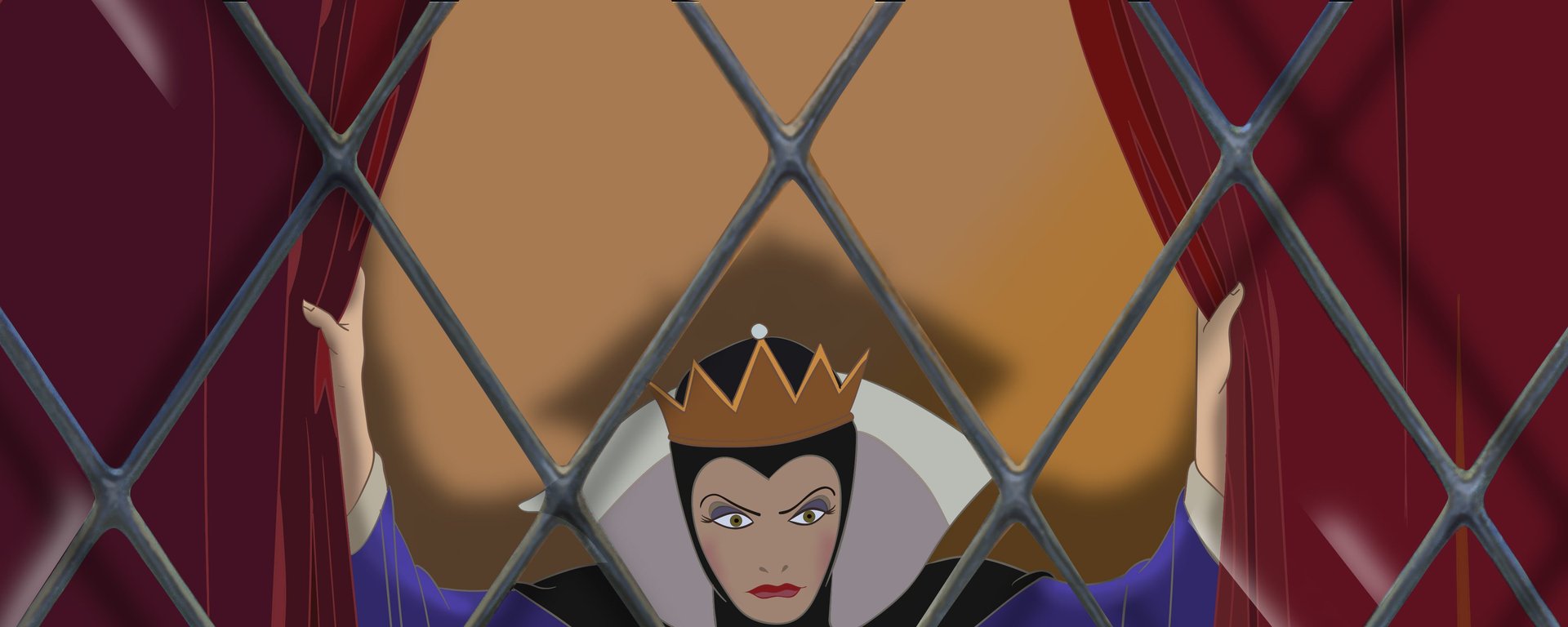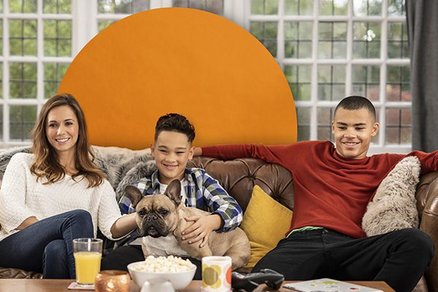
Snow White and the Seven Dwarfs (1937)
Curriculum links: This case study can be used for those studying ‘Section A: Media Industries and Audiences’ on the OCR A-Level Media Studies specification.
Snow White and the Seven Dwarfs is a US musical fantasy animation from 1937, in which Snow White hides in a forest with a household of dwarfs after she is threatened with death by a wicked Queen.
As the first feature-length animated film from Walt Disney Studios – and the first to showcase a full range of then-new animation techniques – Snow White and the Seven Dwarfs provides an interesting snapshot of a particular historical period in the life of the Studio. The film’s classification journey is also useful in understanding how BBFC standards and audience expectations have shifted over time.
Classification History
On its initial cinema release in 1938, Snow White and the Seven Dwarfs was classified A uncut (a classification which required under 16's to be accompanied by an adult). At the time, there were only three classifications a film could receive from the BBFC:
- U - suitable for all
- A - under 16s must be accompanied by an adult
- H - standing for ‘horrific’ and not recommended for under 16s.
In the case of Snow White and the Seven Dwarfs, because some scenes in the film were considered too scary for the U category, the only other appropriate classification at the time was A.
At the request of the distributor, RKO Radio Pictures, the film was considered again in 1953 to determine whether the BBFC was prepared to revise its original decision for a proposed re-release in 1954. On this occasion, the BBFC informed RKO that the film remained most appropriately classified at A but that a U could be achieved by making cuts in a few sequences. The suggested cuts were:
- to reduce Snow White's journey through the woods to a minimum, in particular deleting sounds of screaming and sight of clutching hands
- to reduce the Queen's transformation into a witch, particularly reducing the sound
- to remove the sight of a skeleton, and
- to delete the witch's screams as she falls from rocks.
However, RKO declined to make the suggested cuts and instead appealed against the BBFC's decision to the various local authorities in whose areas the film was due to be shown. The results were mixed, with some local authorities allowing the film to be shown uncut with a U classification while others upheld the BBFC's A classification.
When the film was due for another re-release in 1964, the distributor decided it would be less confusing if the film was able to play as a U in all film theatres – rather than as an A in some areas of the UK, but a U in others. Accordingly, Disney agreed to make the cuts suggested by the BBFC in 1953 and the film was classified U in a newly cut version in 1964.
When the film was classified again in 1987 for a 50th anniversary re-release, all previous cuts were waived, and the full feature was restored. At the time, Compliance Officers noted that each scary moment either involved a joke embedded in the scene, or was bookended with something lighthearted or reassuring. You can download the report explaining Snow White’s 1987 classification decision above.
In order to examine how modern audiences would react to the film decades on from its original release in 1937, BBFC staff were invited to bring their children along to a special screening. The consensus amongst the children present, as well as the BBFC's Compliance Officers, was that Snow White and the Seven Dwarfs – by then a very well known film – was not as frightening for modern viewers.
Classification Issues
The reassuring elements of Snow White and the Seven Dwarfs was – and still is – key to the film’s U classification. The film remains at U today and was most recently classified in 2016 for a cinema re-release, along with the accompanying content advice of ‘very mild scary scenes, threat’.
Since the early 1980s, the BBFC’s classification standards have evolved with a move to foreground social attitudes of people from across the UK. Our published Classification Guidelines are a result of extensive consultations to ascertain what audiences expect to see at each age rating.
At U, BBFC Guidelines state that: ‘scary or potentially unsettling sequences should be mild, brief and unlikely to cause undue anxiety to young children. The outcome should be reassuring.’
There is very mild threat in the scene in which Snow White fearfully runs through the dark forest, where she imagines that the trees have evil faces and clutching hands tear at her dress. However, the sequence is brief in the overall context of a film which focuses on a whimsical adventure. It's also evident that Snow White’s imagination is making her surroundings seem scary, but it soon becomes clear that she is surrounded by friendly creatures who instantly look after her.
The scene in which the Queen transforms into a witch after decanting “a scream of fright” into her potion is also a source of threat in the film. However, the transformation itself is un-detailed as the Queen is lost in a whirlwind of colour. The scene depicting the witch tumbling off the rock signifying her death is depicted with the same level of discretion, as while we hear a blood curdling scream, the witch simply disappears into the mist.
So, although there are brief moments which may potentially scare younger children, the outcome of the tale is reassuring. The darker elements of the story are offset by the softness of the overall film.
You can hear more about the classification of the film, and the 2012 film, Snow White and the Huntsman (2012), in Episode 66 of our podcast: ‘Classifying Remakes - Part 1’.
Discussion Points
- In what ways does Snow White and the Seven Dwarfs demonstrate how the film industry has changed from 1937 to present day?
- Disney were eager to achieve a U classification in 1964, prompting the studio to make cuts to Snow White and the Seven Dwarfs for its cinema re-release. Why was this important for Disney? Do you think achieving a desired age rating is just as important to the studio today? What might have changed?
- Despite the changing of the BBFC classification standards over time, Snow White and the Seven Dwarfs has retained a U rating since 1964. Do you agree with the age rating or do you think the film is better suited for PG audiences? Is there anything you would change in relation to the BBFC’s content advice for Snow White and the Seven Dwarfs?
Recommended Viewing
- Snow White and the Huntsman (Rupert Sanders, 2012) 12
- Shang-Chi and the Legend of the Ten Rings (Destin Daniel Cretton, 2021) 12
- The Jungle Book (Wolfgang Reitherman, 1967) U and The Jungle Book (Jon Favreau, 2016) PG
Explore our other resources about Snow White and the Seven Dwarfs


